How To Make Sourdough Starter
May contain affiliate links. Disclosure policy.
If you’ve ever wondered how to make sourdough starter without yeast, this is your complete guide! Traditional 7 day sourdough starter with perfect results, every time. It’s an easy recipe that takes just 5 minutes a day.
What do you do when your spring isn’t turning out anything like what you thought it would be? You bake bread. Because the aroma of freshly baked bread brightens even the longest, darkest days.
For the past two years I’ve been tackling two types of sourdough. One is sweet, the Amish sourdough starter recipe needed for this Friendship Bread. The other is a classic sourdough that bakes up beautiful loaves of sourdough bread, sourdough biscuits, sourdough cinnamon rolls, waffles, sourdough pancakes and even a chocolate cake with sourdough.
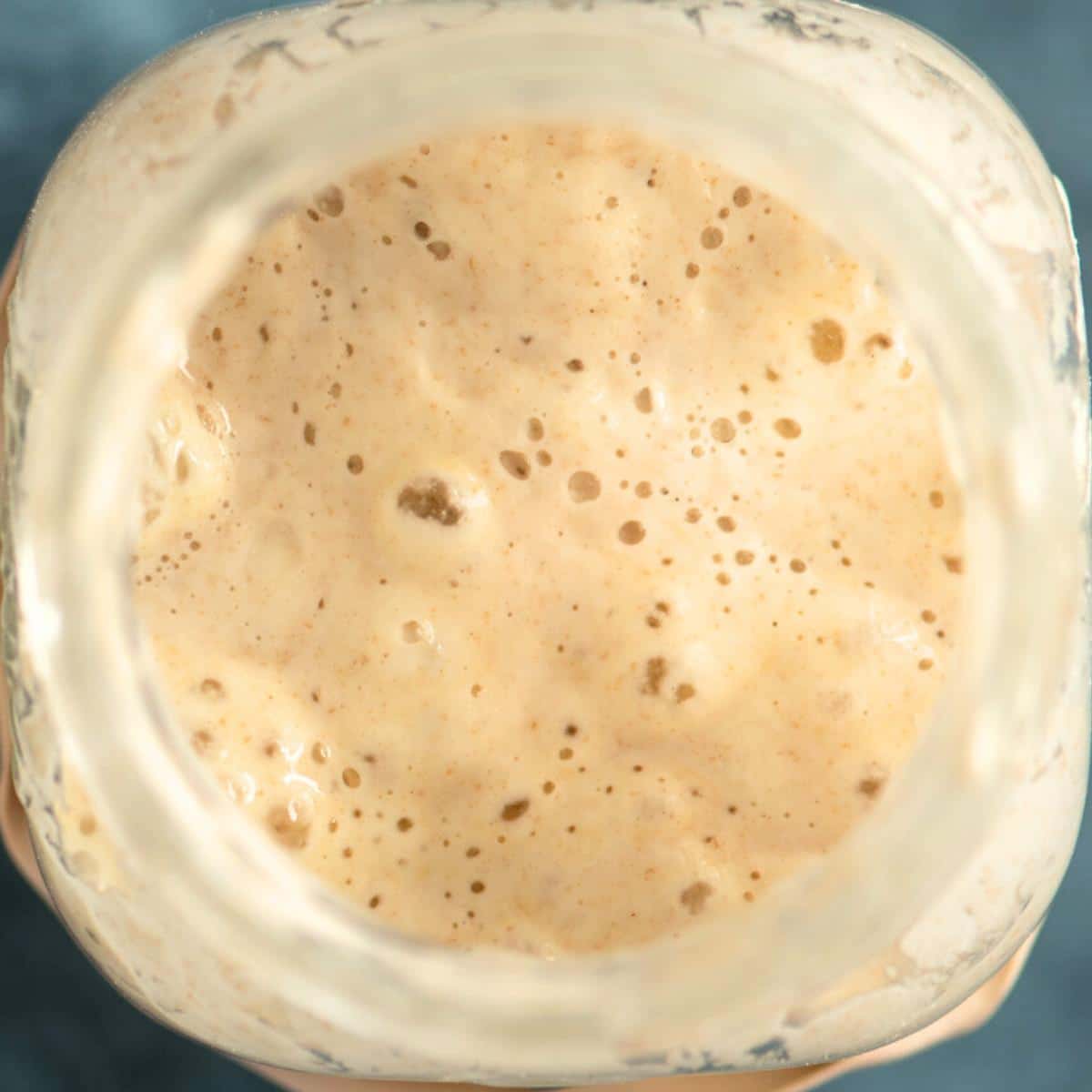
Sourdough starter is a “wild yeast” that bakers use in in place of commercial yeast. Throughout this sourdough starter making process below, flour and water will go through a fermentation process and grow naturally occurring bacteria and yeast that will give breads a beautiful rise.
Does sourdough really take a week?
Plan a week to get this sourdough active enough to rise a loaf of bread. Yes…a week seems like a long time, but it’s easy because it takes about 5 minutes a day. There are sourdough starter recipes with yeast if you want a “lazy” sourdough.
Sourdough starter without yeast is 100% worth it. When you make your own sourdough starter, it’s so rewarding!
Two Tools Needed
There are two tools needed for the best results:
- kitchen scale – Although you can measure by volume, for the best consistent results, investing in a kitchen scale. It’s worth it and will give a consistent hydration level.
- sourdough jar – Glass jars hold sourdough beautifully. I love that they are glass so you can see the fermentation. They give lots of room for the starter to double. And they seal nicely when you need a break from baking bread.
Did you know?
Don’t store your sourdough starter in a metal container. Not all metal is created equally and acids react to metals. Use glass for the safest results.
Two Key Ingredients
It’s important to use unbleached flour and non-chlorinated water for sourdough starter.
- Non-Chlorinated Water. Use filtered water since chlorine in tap water can kill the yeast as it tries to grow. Keep bottled water on hand.
- Unbleached Flour. Bleached flour does not have as much natural yeast as unbleached flour does. I’ve had the most success with Meijer store brand unbleached flour. Please note that the first day you’ll need unbleached whole wheat flour, but the rest of the days use unbleached white flour. King Arthur unbleached flour is another good option.
How To Make Sourdough Starter
We’re going to talk about the sourdough process in days. Plan for 7 days to work with the sourdough. It won’t take long at all each day…less than 5 minutes after you get it going!
Here are our step-by-step instructions:
DAY 1:
- Start with a clean glass jar, such as a pint size mason jar or weck jar. It should able to hold about 2 cups so that it can handle the rise of the starter.
- Place the jar on the kitchen scale. Turn the scale on and make sure it is reading 0 grams. If it isn’t, press the “tare” button to get the display to read zero.
- Add 60 grams of unbleached whole wheat flour and 60 grams of warm, non-chlorinated water. The mixture will be very, very think. It won’t be impressive at all to start. But just wait. 🙂

- Cover the jar loosely with plastic wrap and let it sit on the kitchen counter at room temperature, or in a slightly warm place, rather than cool.

DAY 2:
- Check the starter. You’re looking for bubbles to form. If you don’t see any, it is ok because they come and go fairly quickly.
- Don’t mix it. Just check it, then let it sit again for another 24 hours.

Day 3.
- This is the first day you’ll feed the starter. Feed it no matter what it looks like. At this point the starter is going to be “stretchy”.


- Pull out half of the starter and throw it away. Use your kitchen scale to again add 60 grams of all purpose, white, unbleached flour (remember…you only use whole wheat that first day) and 60 grams of warm water to the remaining starter. Always use equal parts flour and water.
- Mix it all together. It will still be really thick. Cover loosely with plastic wrap.
Day 4, 5, and 6.
- Discard half of the starter and feed as you did in Day 3. You’ll do the same thing each day no matter what the starter looks like. Discard half, and feed with equal amounts of flour and warm water.
- As these three days pass you’ll notice a natural rise and fall to the starter. This is an important process to observe because it will help you learn you when the starter is ready to bake with and when it is hungry. You can use a rubber band (or a piece of tape) on the jar to mark where the starter is when you feed it, then how it doubles as the starter grows.
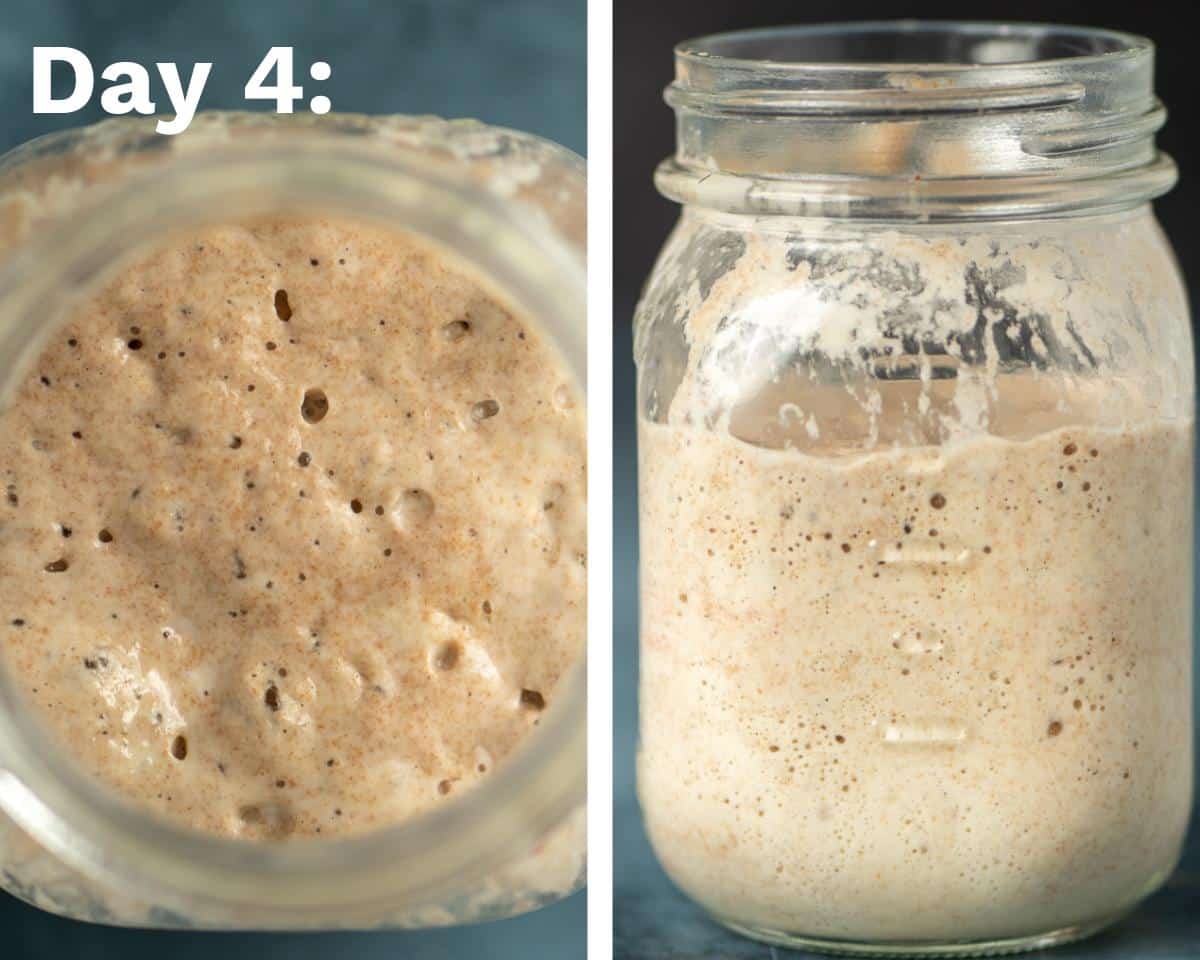

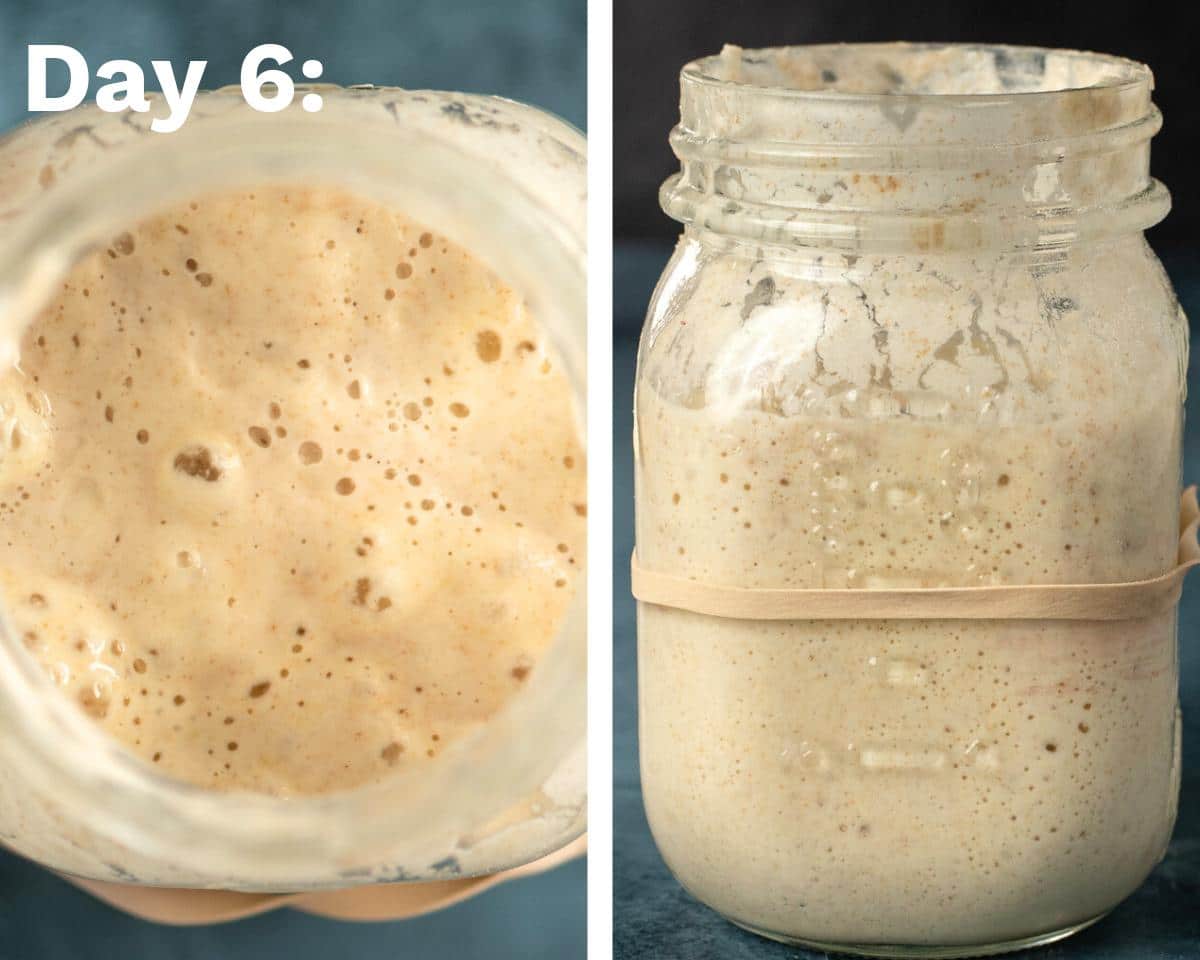
Day 7.
- Your new starter should have lots of bubbles and you are almost ready to bake! A healthy starter should look light and airy and have a sweet and tangy aroma. It should not be a sharp or harsh smell.
- When your starter looks like this, it means it is ready to start baking the baking process!

- If your starter does not look like this, you might want to continue the feeding process for a few more days before using it. This can happen often in cooler temperatures.
When is starter ready to bake with?
Starter is ready when it is bubbly and in the “doubled” stage. This is called an “active sourdough starter”. If you are wanting to bake bread and the starter is “deflated”, feed the starter, wait a couple of hours and it should be doubled and ready to bake with.
TRY THE FLOAT TEST
Drop a little bit of starter into a glass jar. If the starter floats, it is ready to bake with. See the picture below.
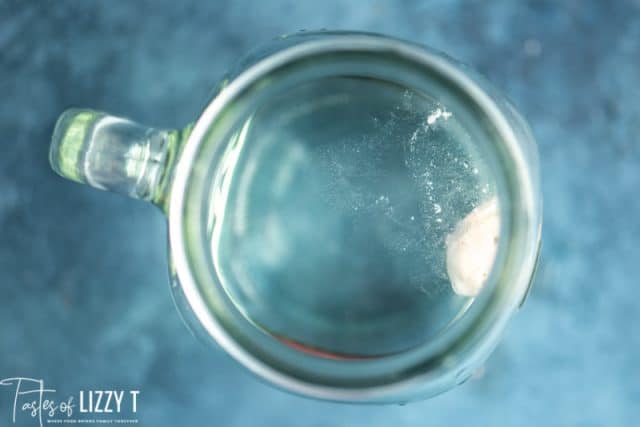
And for fun…name your starter!
Once you have your homemade sourdough starter it’s time to name it! We named ours Clint. You know…for “Clint Yeastwood”. 🙂 Have fun with it!

Feeding Schedule
- If you are storing your starter at room temperature, you’ll need to feed it daily. Depending on how much you keep, you can discard about half the starter (use it in sourdough pancakes or sourdough discard cinnamon rolls) and feed it equal amounts of the unbleached all-purpose flour and non-chlorinated water.
- If you don’t use your sourdough often, seal it and store it in the refrigerator. Feed it weekly with equal amounts of flour and water. There will be a cloudy liquid on top of the starter. That is called “hooch” and it means your starter is hungry. Stir that liquid in, then feed. Do this weekly. I like to set a reminder on my phone to go off once a week. That way I always have starter on hand.
- Once your sourdough is refrigerated, be sure to remove it from the fridge 12-24 hours before you are ready to bake. Mix it, feed it, then watch for it to bubble. If it doesn’t bubble, discard half of the starter and feed again with equal amounts of water and flour.
You’ll learn the timing of your own starter and know how long it takes to get it bubbly and active after a few times.
What should I make with my new starter?
First, make a beautiful loaf of artisan sourdough bread! There’s just nothing like it. Then you can try sourdough cinnamon rolls. Because you know we’re all about the homemade cinnamon rolls. 😍
How much starter should I keep?
Replenish your starter after you’ve used some up by adding 25 to 50 grams of flour and an equal weight of water to keep at least ¼ cup of starter.
If you have an active starter, it’s so easy to quickly grow more sourdough if you’re needing a large amount. There is no need to keep huge amount of it in your refrigerator.
And that’s about it! Please share your hints for making sourdough. What have you had success with? I know many of you are pros and can help me along my sourdough journey!
What do I do with the daily discards?
Discard recipes use a leavening agent (baking powder, baking soda or yeast) to get a rise in the baked good. See some of our favorite recipes using sourdough discard here:
- sourdough discard pancakes
- sourdough discard pizza dough
- sourdough bread with yeast
- sourdough biscuits
- sourdough discard hamburger buns
- sourdough rolls
- whole wheat sourdough pancakes
- pumpkin sourdough bread
- sourdough pie crust
Books to Help You Learn
- Artisan Sourdough Made Simple. This cookbook was a lifesaver for us!
- Starter Sourdough. The step by step guide
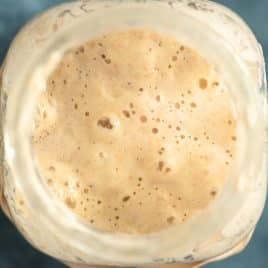

How to Make Sourdough Starter
If you've ever wondered how to make sourdough starter without yeast, this is your complete guide! Traditional 7 day sourdough starter with perfect results, every time. It's an easy recipe that takes just 5 minutes a day.
Prep Time 20 minutes
Resting Time 7 days
Total Time 5 minutes
Equipment
- Sourdough Jar
Ingredients
- 60 grams unbleached whole wheat flour
- 300 grams warm non-chlorinated water (divided)
- 360 grams all-purpose unbleached flour (divided)
Instructions
Day 1.
- Start with a clean glass jar. I use a pint size mason jar when I am beginning a starter, but a weck jar or other glass jar will be fine too. You’ll just want it to be able to hold about 2 cups so that it can handle the rise of the starter.
- Place the jar on the kitchen scale. Turn the scale on and make sure it is reading 0 grams. If it isn’t, press the “tare” button to get the display to read zero.
- Add 60 grams of whole wheat flour and 60 grams of warm, non-chlorinated water. The mixture will be very, very think. It won’t be impressive at all to start.
- Cover the jar loosely with plastic wrap and let it sit at room temperature, of in a spot where the room temperature is slightly warmer.
Day 2.
- Check the starter. You’re looking for bubbles to form. If you don’t see any, it is ok because they come and go fairly quickly. Don’t mix it. Just check it, then let it sit again for another 24 hours.
Day 3.
- This is the first day you’ll feed the starter. Feed it no matter what it looks like. At this point the starter is going to be “stretchy”. Pull out half of the starter and throw it away. Use your kitchen scale to again add 60 grams of all-purpose unbleached flour and 60 grams of warm water.
- Mix it all together. It will still be really thick. Cover loosely with plastic wrap.
Day 4, 5, and 6.
- Discard half of the starter and feed as you did in Day 3. You’ll do the same thing each day no matter what the starter looks like. Discard half, and feed with equal amounts of flour and warm water.
- As these three days pass you’ll notice a natural rise and fall to the starter. This is an important process to observe because it will tell you when the starter is ready to bake with and when it is hungry. You can use a rubber band (or a piece of tape) on the jar to mark where the starter is when you feed it, then how it doubles as the starter grows.
Day 7.
- Your starter should be very bubbly and you are almost ready to bake! It should have a sweet and tangy aroma. It should not be a sharp or harsh smell. It should look light and airy.
- If your starter does not look like this, continue the feeding process for a few more days before using it.
- Once your starter is light and airy, it's time to bake with it! Place the active starter in a clean jar that it will continue to live in as you feed it.
- Click here to make our favorite artisan sourdough bread recipe.
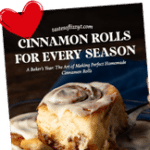



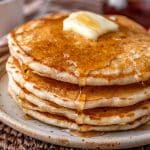
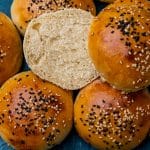
I made this starter on Saturday evening (with all-purpose, bleached flour) and it seemed to be doing well yesterday (I stirred it a few times) but today (Monday) it has dropped well below where it started. Is that normal for it to rise and fall? Also, If I will not be using the starter for 6 more days, would it be beneficial to feed it this week? THANK YOU! I love this site! I’ve made your clone of a Cinnabon recipe and it is TO DIE FOR! I plan on trying that recipe with the sourdough starter! Fingers crossed! 🙂
After only 24 hours of bubbling in a warm spot mine separated and the liquid rose to the top. I’ve stirred a few times, and it’s very watery. Do I need to feed it already? And if so, how much? It will be 36 hrs in the morning.
I got busy and forgot to put the starter in the fridge after 48 hours…it’s been sitting out for like 62. Does that make it unsafe to use or can I go ahead and use it like normal?
I started this last week and it’s working! I’ve just made my second batch of bread! Thanks!
When I feed the starter, I leave it out overnight before putting it back in the refrigerator. Is that right?
Can I use fresh yeast instead of active dry? If so, how much? Also should I change the proportion of water and flower?
I made exactly as described. Within 90 minutes it bubble over in my over. I took it out, stirred it and put it back in. Does this sound right? Or should I do something else?
Love this recipe! I was gone a few days came home and there is a dark liquid on top. Looks like the color of yeast, but haven’t seen this before. Still smells ok, can I use this???
My starter is stored in the fridge. I feed it whenever I think about it. How do I know if it has gone bad? It’s been in fridge about three weeks. I haven’t made anything with it.
It seems to me that sunshine is the last thing you would want. Sunlight kills bacteria and your starter is a bacterial culture that needs to be in a dark moist location
My butcher block sits by a window with a lot of sunshine. Can I put my starter in it in the sunshine?
Thank you for a simple recipe that has allowed me, a total novice, to bake successful sourdough bread!
Hello, I’m currently based in Malaysia and I tried to make a fresh sourdough starter with your recipe – it started bubbling within the first 12 hours, smells sweetly sour, but a thick layer of yellowish frothy foam formed on top of a layer of liquid and it just wouldn’t go down. I’ve waited for 48 hours and it stayed the same. My question : should I feed it with more flour and water, or should I continue to wait and see ? I’ve made starters before but it’s the first time I’m making it in a tropical climate and… Read more »
I’ve done this recipe and it worked well for me in France, and now I’m trying to do a batch for my dad who’s trying to bake his own sourdough bread but we’re situated in tropical climate this time. The sourdough has been fermenting for more than 48 hours but there’s a thick layer of froth on top of the “hooch” which is quite unusual for me. It has done the whole bubbly part in the first 24 hours, but the froth formed on top did not seem to go down. I was wondering if it’s due to tropical climate… Read more »
This worked great for me. I saw quite a few really elaborate, complicated methods for producing a sourdough starter, and almost gave up on sourdough before I found this. I was looking for a simple way of doing this, and this is it. I wanted to give some wild yeast a fighting chance in this little experiment, so I used whole wheat flour (for now). The active dry yeast really gives it a good jump-start, and it was nice to have a nice, sour goo to put in my next loaf of bread after just 48 hours. I also used… Read more »
I made this starter October 1, 2018 and it’s getting better and better each week! I found it easy and it’s forgiving when you forget about it a day or two longer than you should. My family and I are loving it!